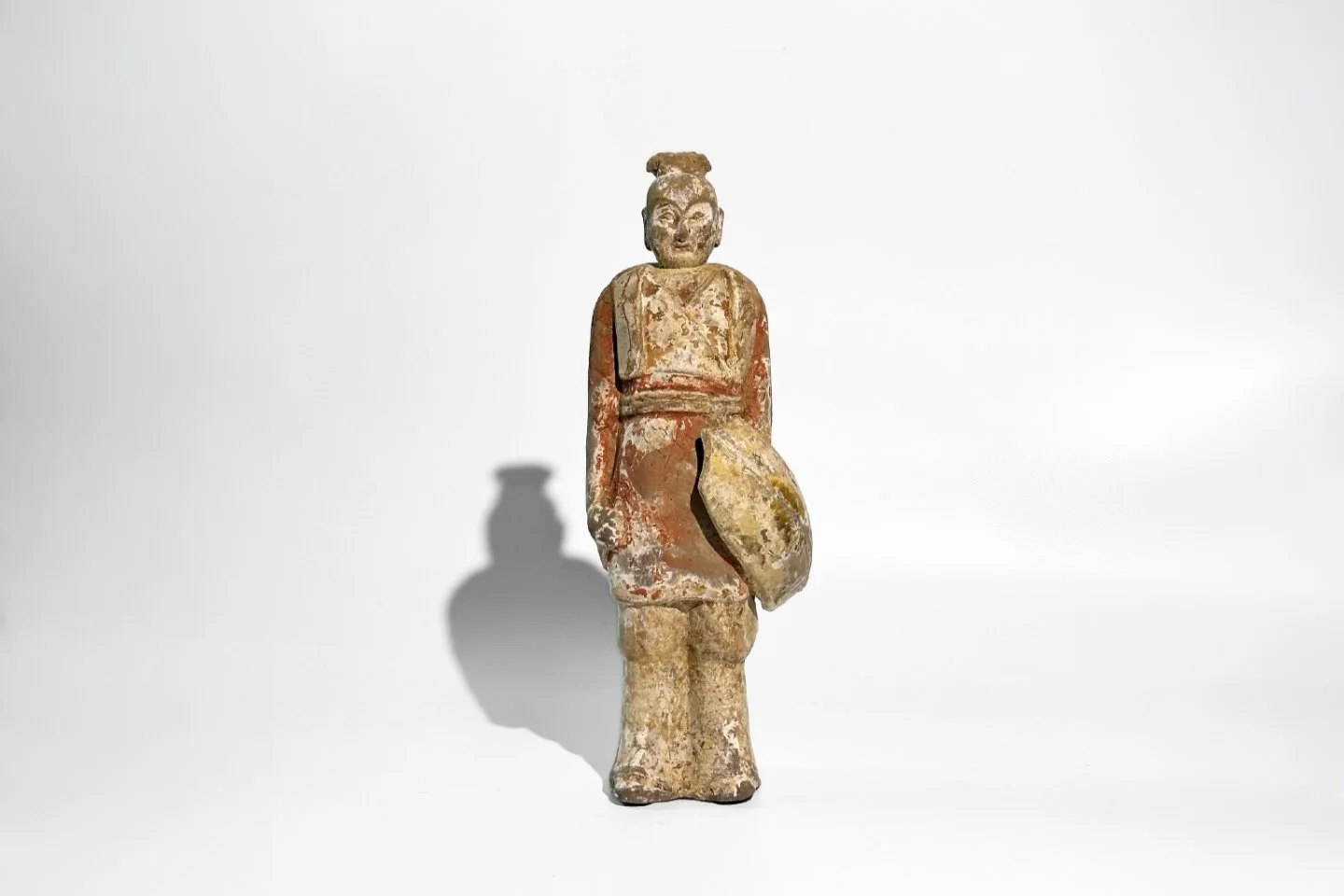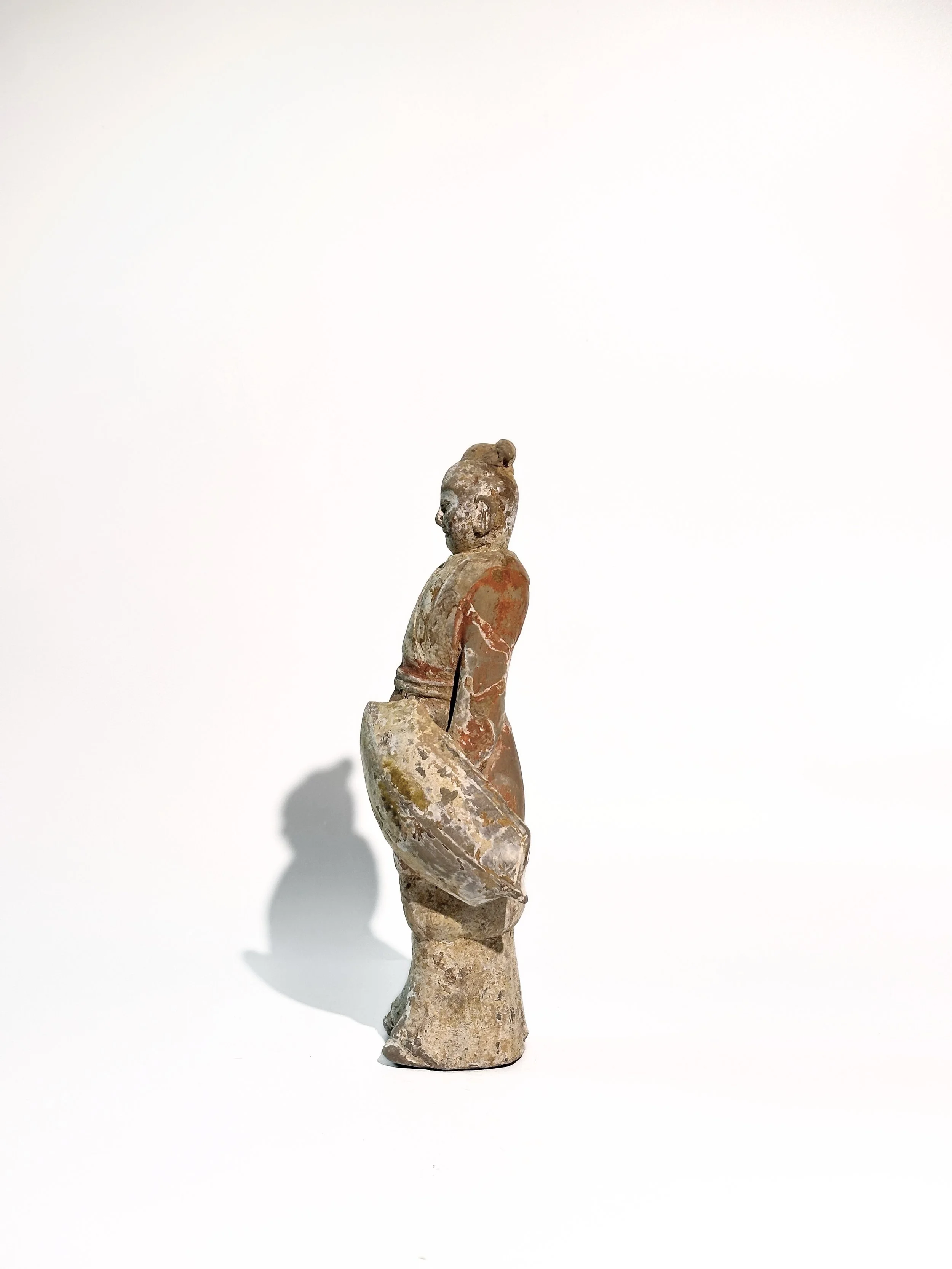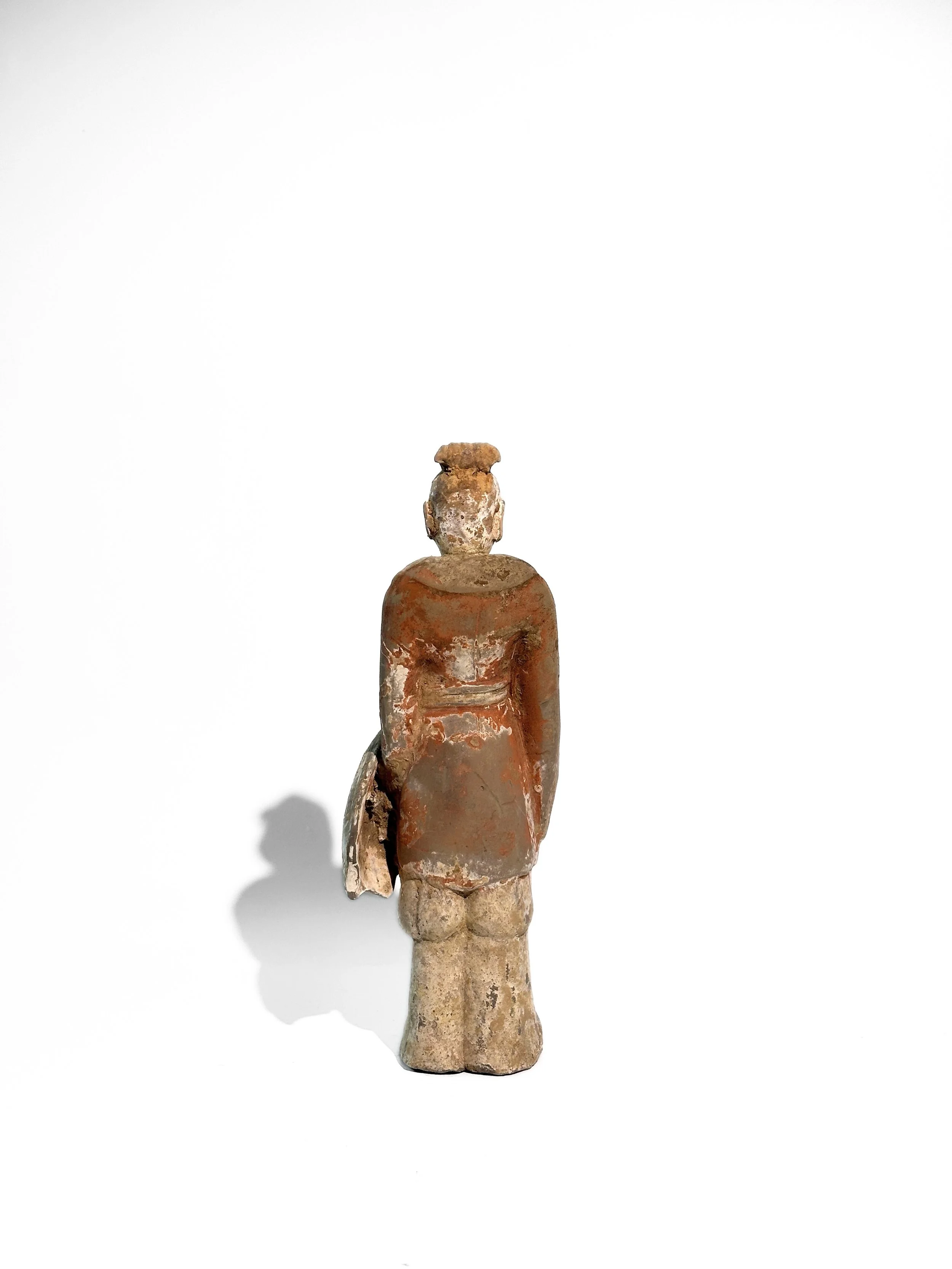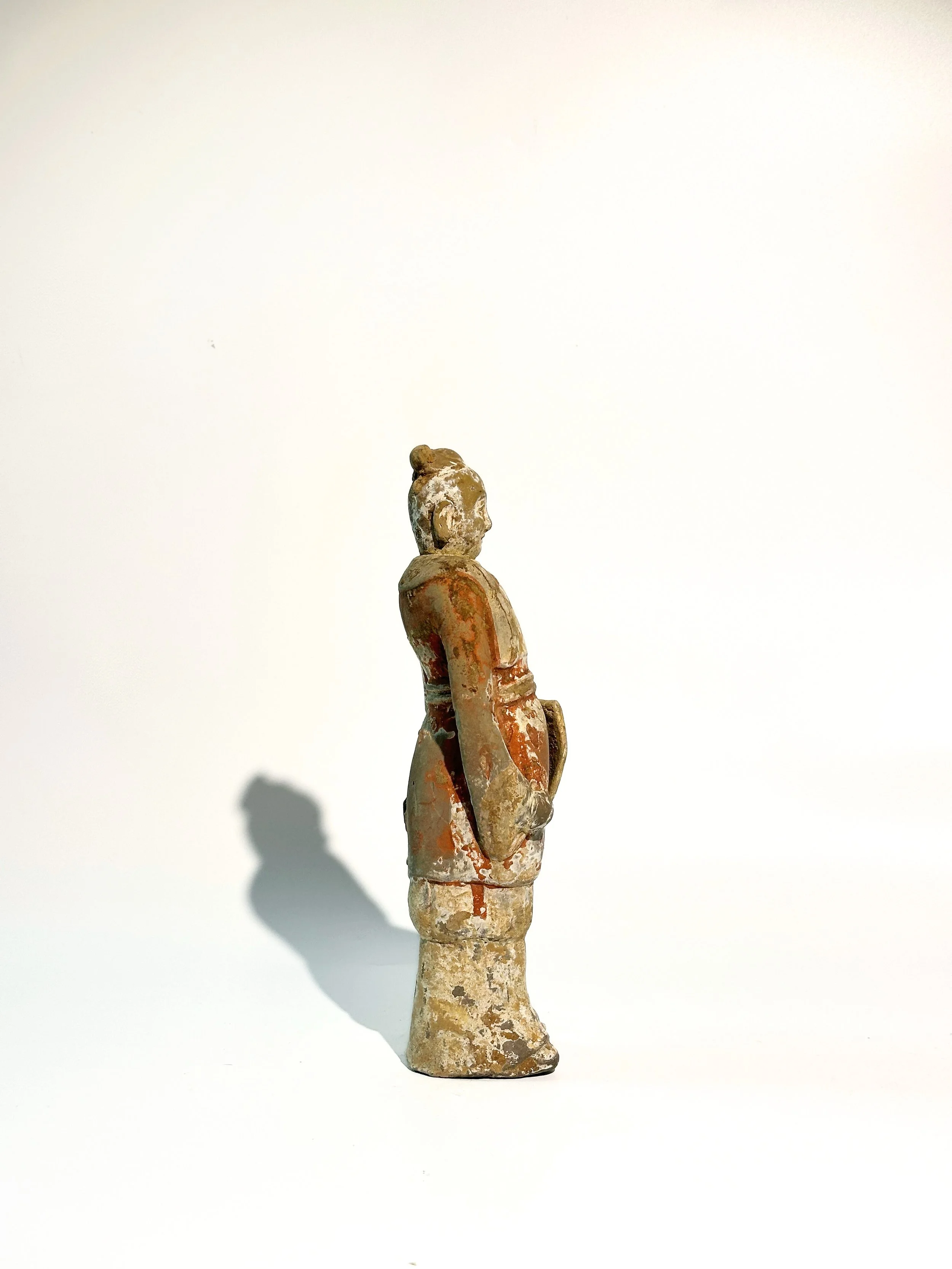 Image 1 of 5
Image 1 of 5

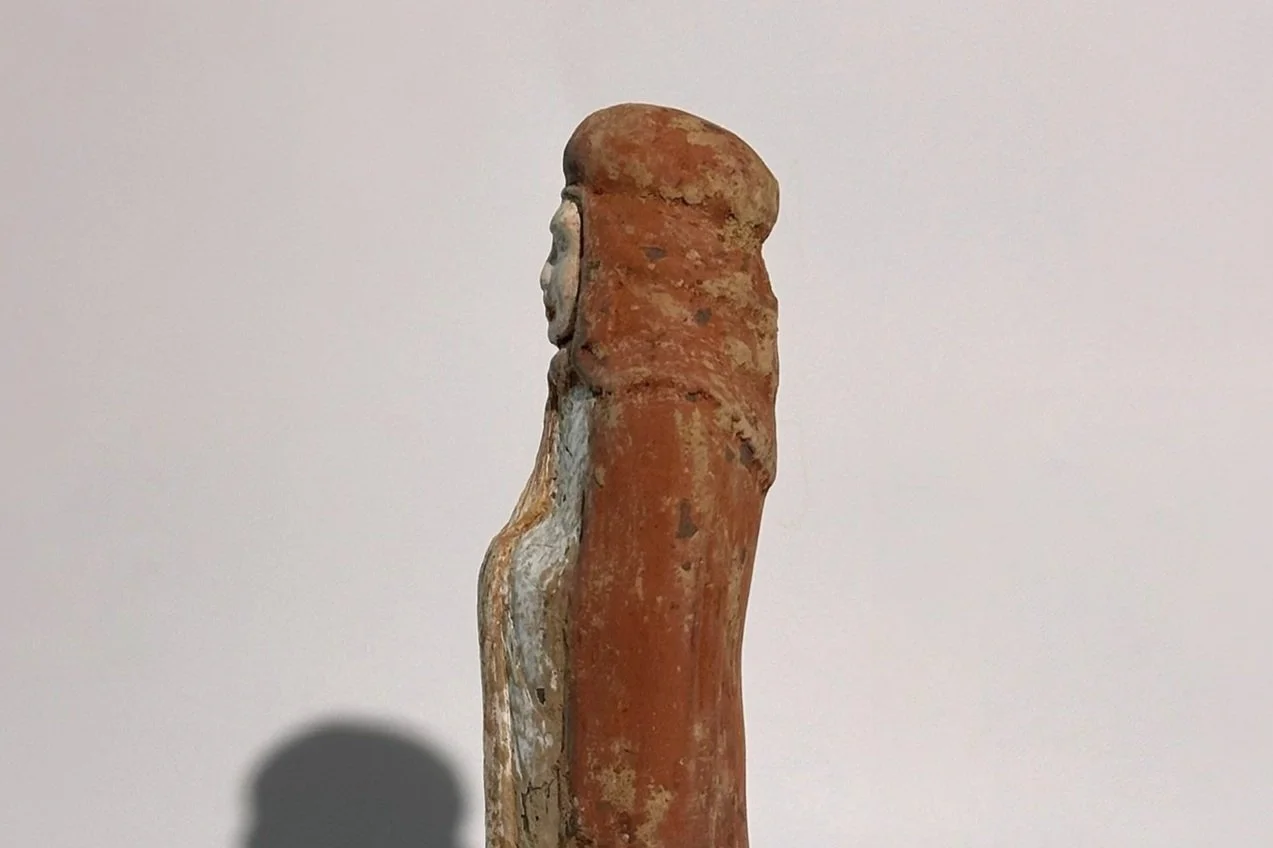 Image 2 of 5
Image 2 of 5

 Image 3 of 5
Image 3 of 5

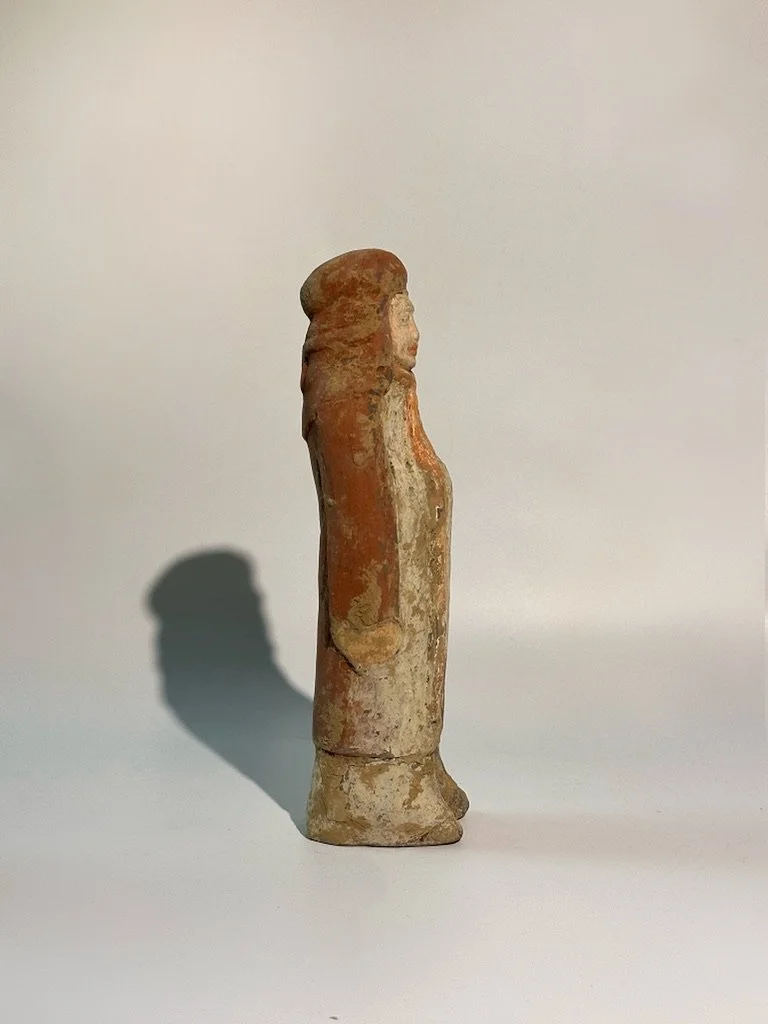 Image 4 of 5
Image 4 of 5

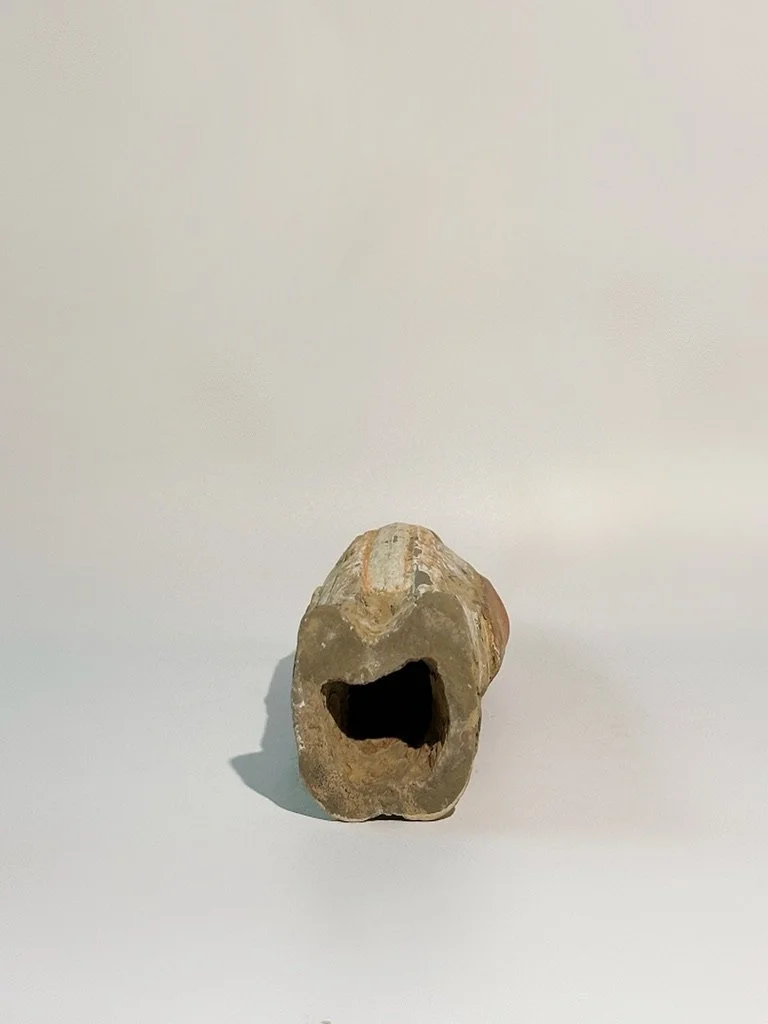 Image 5 of 5
Image 5 of 5






Northern Qi Attendant 北齊 風帽陶俑
This finely sculpted pottery warrior figure dates to the Northern Qi period and reflects the profound cultural exchange between the nomadic Xianbei people and the Central Plains during the Northern Dynasties. The warrior wears a distinctive Xianbei-style cap, also known as a long-tailed or draped cavalry hat. Characterised by its rounded crown and cloth flaps extending down the sides and back, this cap was not only practical for cold climates but also served as a symbol of rank and ethnic identity.
Following the Han-style reforms initiated by Emperor Xiaowen of Northern Wei, Xianbei dress was temporarily replaced by Han Chinese clothing. However, in the later Northern Dynasties—particularly during the Western Wei, Northern Zhou, and Northern Qi periods, Xianbei attire, including the draped cap, saw a revival and became widely adopted in formal court and ceremonial settings, demonstrating the era’s dynamic fusion of Han and nomadic cultures.
The warrior is shown standing upright, dressed in a long Xianbei-style robe fastened with a broad sash. His posture is confident, and his face exudes strength and solemnity, capturing the martial spirit of the Northern Qi military elite. Traces of original red ochre and white pigments remain on the surface, giving the figure a restrained yet dignified appearance, enhanced by its weathered, timeworn patina.
This piece stands as a rare and valuable artefact of Northern Dynasty military attire, providing direct insight into Xianbei fashion, cultural integration, and ceremonial representation. It holds significant historical, artistic, and scholarly value.
Provenance: Private Collection from Hong Kong
此俑北朝時期陶武士俑,頭戴鮮卑風帽,體現北朝時期鮮卑文化對中原地區深遠的影響。風帽源自北方少數民族,亦稱突騎帽、長帽或大頭垂裙帽,帽頂圓隆,帽沿位於額部,兩側及腦後垂下長裙狀布幔,既具禦寒實用功能,亦是身份與民族特徵的象徵。
自北魏孝文帝漢化改革後,鮮卑服飾一度被漢族服制取代,至北朝後期,隨著鮮卑文化的復興,風帽與鮮卑服裝再度盛行,尤其在西魏、北周及北齊時期,成為官員朝會及宴集時的正式裝束,顯現出胡漢文化融合的時代風貌。
俑身著鮮卑式長袍,腰束寬帶,姿態挺拔,面容剛毅,神情莊重威嚴,充分表現出北齊武士的英氣與武備之風。通體仍留存赭紅、白色等彩繪殘跡,素樸古雅,歲月痕跡間流露出歷史的厚重感。
此件陶俑不僅是北齊軍事與民族服飾的實物見證,更是研究北朝鮮卑文化與服飾制度的重要資料,極具歷史、藝術與收藏價值。
來源: 香港私人藏家
This finely sculpted pottery warrior figure dates to the Northern Qi period and reflects the profound cultural exchange between the nomadic Xianbei people and the Central Plains during the Northern Dynasties. The warrior wears a distinctive Xianbei-style cap, also known as a long-tailed or draped cavalry hat. Characterised by its rounded crown and cloth flaps extending down the sides and back, this cap was not only practical for cold climates but also served as a symbol of rank and ethnic identity.
Following the Han-style reforms initiated by Emperor Xiaowen of Northern Wei, Xianbei dress was temporarily replaced by Han Chinese clothing. However, in the later Northern Dynasties—particularly during the Western Wei, Northern Zhou, and Northern Qi periods, Xianbei attire, including the draped cap, saw a revival and became widely adopted in formal court and ceremonial settings, demonstrating the era’s dynamic fusion of Han and nomadic cultures.
The warrior is shown standing upright, dressed in a long Xianbei-style robe fastened with a broad sash. His posture is confident, and his face exudes strength and solemnity, capturing the martial spirit of the Northern Qi military elite. Traces of original red ochre and white pigments remain on the surface, giving the figure a restrained yet dignified appearance, enhanced by its weathered, timeworn patina.
This piece stands as a rare and valuable artefact of Northern Dynasty military attire, providing direct insight into Xianbei fashion, cultural integration, and ceremonial representation. It holds significant historical, artistic, and scholarly value.
Provenance: Private Collection from Hong Kong
此俑北朝時期陶武士俑,頭戴鮮卑風帽,體現北朝時期鮮卑文化對中原地區深遠的影響。風帽源自北方少數民族,亦稱突騎帽、長帽或大頭垂裙帽,帽頂圓隆,帽沿位於額部,兩側及腦後垂下長裙狀布幔,既具禦寒實用功能,亦是身份與民族特徵的象徵。
自北魏孝文帝漢化改革後,鮮卑服飾一度被漢族服制取代,至北朝後期,隨著鮮卑文化的復興,風帽與鮮卑服裝再度盛行,尤其在西魏、北周及北齊時期,成為官員朝會及宴集時的正式裝束,顯現出胡漢文化融合的時代風貌。
俑身著鮮卑式長袍,腰束寬帶,姿態挺拔,面容剛毅,神情莊重威嚴,充分表現出北齊武士的英氣與武備之風。通體仍留存赭紅、白色等彩繪殘跡,素樸古雅,歲月痕跡間流露出歷史的厚重感。
此件陶俑不僅是北齊軍事與民族服飾的實物見證,更是研究北朝鮮卑文化與服飾制度的重要資料,極具歷史、藝術與收藏價值。
來源: 香港私人藏家
